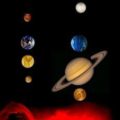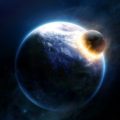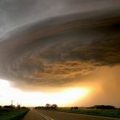
Analyzing the starlight reflecting off the debris disk, the astronomers concluded that the particles are fluffy and roughly ten times larger than typical interstellar dust grains. The fluffiness suggests that the particles were shed by much larger, but unseen snowball-sized objects that had gently collided with each other around 4 billion miles from the star. These unseen objects are believed to reside in a region dubbed the “birth ring,” first hypothesized in 2005 by Berkeley astronomers Linda Strubbe and Eugene Chiang. As the larger objects bump into each other, they release fluffy particles that are propelled outward by the intense pressure from the sun’s rays.
The new images may offer a glimpse of what our own solar system was like during its formation. “If we ran our solar system clock back nearly 4.5 billion years, then the infant Kuiper Belt would probably look like AU Microscopii’s birth ring,” said Paul Kalas, an adjunct professor of astronomy at Berkeley. The planets in our solar system lie inside the Kuiper Belt. Likewise, inside AU Microscopii’s version of the Kuiper Belt is a gap that may have been carved out by one or more as-yet unseen planets.
More images and additional information about AU Microscopii
Source: Space Telescope Science Institute








Comments are closed.